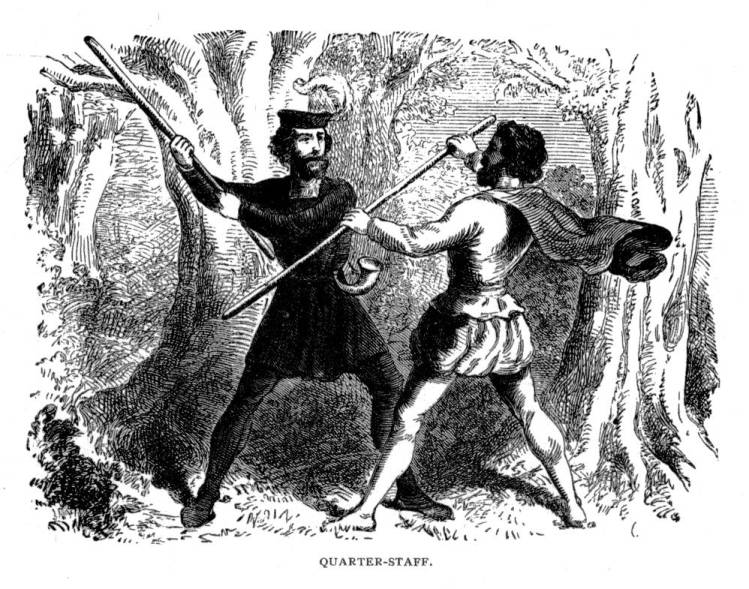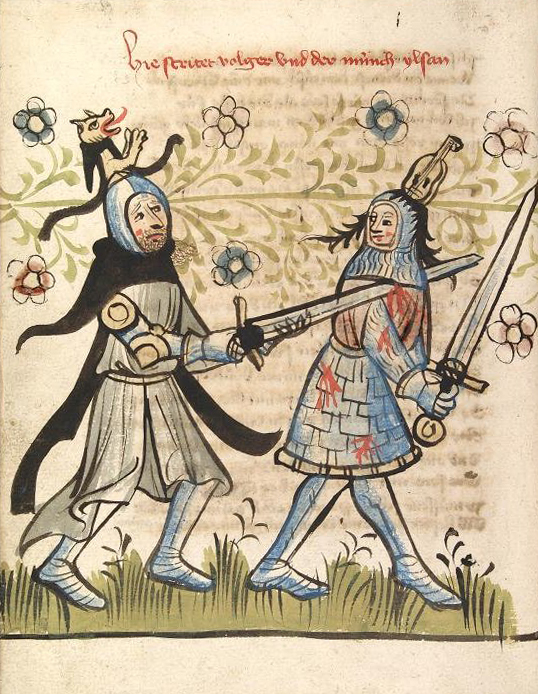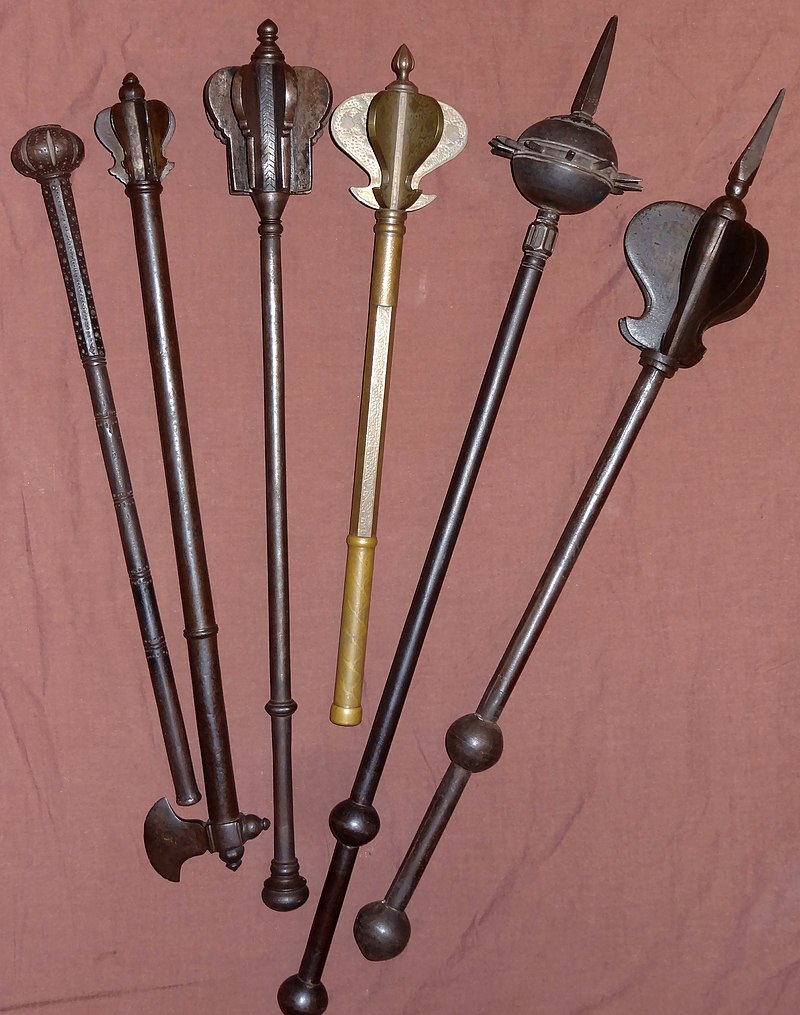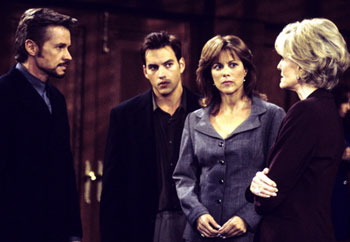As quasi promised last time, now I'm going to talk about swords. It's actually pretty hard to classify swords. There are all sorts of ways to do it. By hilt type. By blade type. By country. By era. It's more of an
art than a
science. Whatever. I'm going to rank 20 "types" of swords in a manner that I feel is appropriate. No, it will not include every type of sword out there. Some will be missing. Eh. That's just how it is. If you don't see your favorite sword there, I'm probably just classifying it as a subset of one of the below. Sorry if you think an Ashanti "Akrafena" or an Indonesian "Golol" are different enough from a Cutlass for me to call them their own things... because I don't.
Also note, that I'm making a length distinction that does not include what most people would call "knives" or "daggers." Which means I won't rank awesome things like the
Katar (so awesome!) or the Kris.
20. Rapier
 |
| Real warriors don't shout "en garde!" They just stab. |
Rapiers are boring and used for lame stuff like fencing, duels, and ceremonial battle. If you were on a battlefield with a rapier, you'd be screwed pretty fast. I know Arya's Needle might seem like it's cool, but it's not. Arya is cool. Needle is a lame Rapier. Civilization really took a step back when it got rid of awesome, hulking swords and downgraded to these sidearms.
19. Ye Olde Bronze and Iron Age Swords (Various)
 |
| Gladius, just one of many examples. |
If any of my 20 "types" of swords here is overly generalized, it's this one. I'm just throwing all of the ancient swords that go up to the end of the Iron Age in the Mid Hundreds AD period together in this same pot o swords. Many of them are fairly unsophisticated straight, metal swords like the Xiphos, Gladius, Acinaces, Roman Spatha, Chinese Jian, or Japanese Tsurugi (although some have some curvature, like the Falcata). They're pretty similar with a few differences about their length, whether they're single or double-edged, etc. I won't lose any sleep over all of these different swords being thrown together. I did, however, pull out two separate ancient weapons from this era and single them out in the rankings below - because they have some unique cool things about them.
18. Hook Sword
 |
| Kabal from Mortal Combat is, alas, not an actual historic figure. Also this picture cuts off the hook part, which is dumb and thus makes it a really bad picture to use. Oh well. |
The Chinese hook sword (shuang gou) is cool in principle. Its handle area is cool, you can stab with it, and you can hook and pull away other people's weapons with it. It would rank higher if it were more of an actual historic weapon though, as claims about them being an ancient and/or medieval-era weapon are highly dubious. In actuality, they're probably more of a modern weapon designed to look super cool.
17. Side Sword
 |
| Better than a Rapier, but not by much. |
Also known as the "Spada da lato," the side sword is sort of an intermediate sword that was used mostly in the 1500's as the classical one-handed, double-edged knightly/arming sword was going out of fashion and the typical arming swords was headed to what would become the Rapier. As you saw above, I'm not a fan of Rapiers. Since the Side Sword is sort of 25% Knightly Sword and 75% Rapier, it's not going to be ranked high.
16. Kampilan
 |
| Well, this is nifty. |
This Filipino sword is unique enough so that I can't really put it under any of the other types of swords which I am ranking. Visually it is sort of reminiscent of some other ones, but I'm going to just say that it's it's own thing and move on.
15. Harpe
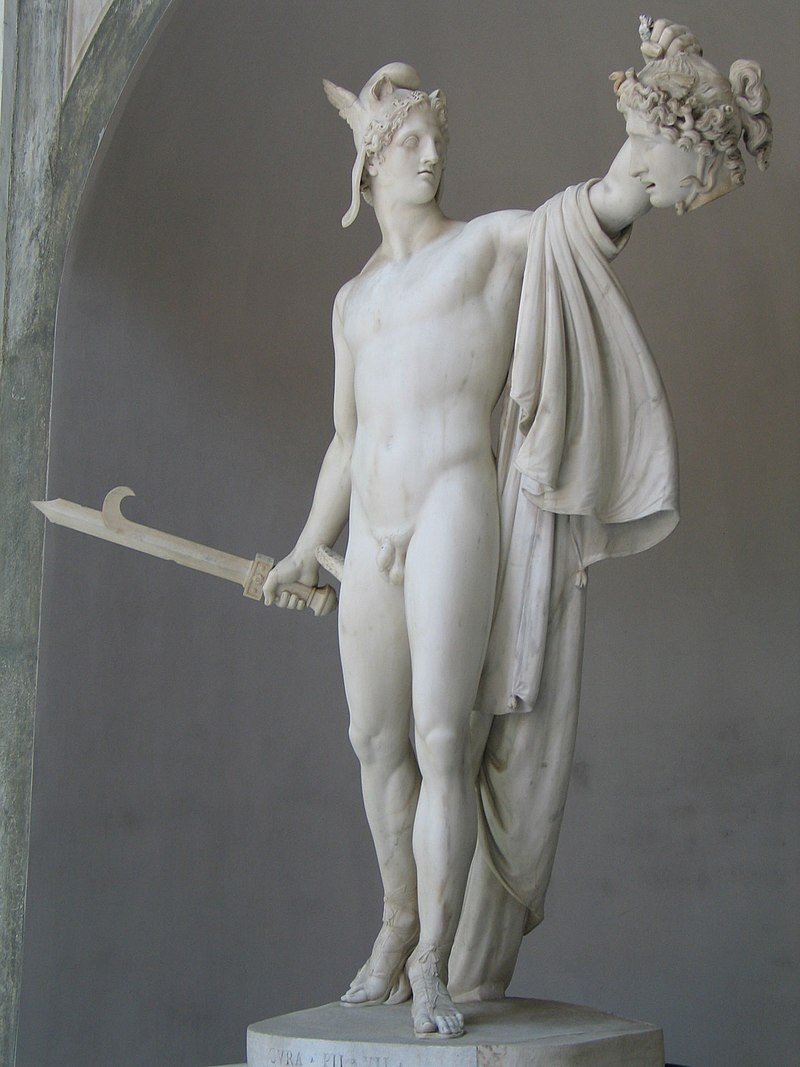 |
| A sword that nobody probably actually used (who isn't a fictional god). |
A Harpe is one of those two Bronze/Iron Age swords that I alluded to wthat I separated from the general category. It's basically a boring Xiphos or Gladius-like sword, but with a bit of a hook/sickle protrusion hanging out of it. It's that mini sickle which makes the sword cool enough to rank on its own. But I won't rank it that high, as the weapon doesn't appear to have really been used that much, if at all. In fact, the weapon may have only been used in art and legends from mythology. Oh well.
14. Kalis
I mentioned that I didn't rank the Kris because I consider it to be a knife, not a sword. Well, the Kalis is a Filipino weapon much like the Kris, except long enough to be classified as a sword. The basic reason it's sweet is because it's got a "wavy" blade. The wavy potion allows for better slashing in battle, as straight blades tend to get stuck people's bones and nobody wants that. The person stabbing doesn't want their sword stuck in someone's bone. A person being stabbed doesn't want someone's sword stuck in their bone. That's no good, all sides agree. Technically I could have ranked other wavy-bladed swords rather than this one, as "flame-bladed" or "wave-bladed" swords are indeed somewhat common. However, most of those swords are actually just sub-types of others, such as the Longsword, with some waviness added to the blade. This, on the other hand, is fairly unique.
13. Viking Sword
 |
| Almost a cool Knightly Sword, but not quite there yet. |
Viking Swords (sometimes also called Carolingian Swords) were yet another "transitional" type of weapon, linking the Roman Age weapons like the Spatha to the more famous medieval Knightly Sword. These are the swords of the "Dark Ages" and would be the types that people like Charlemagne used. Legendary King Arthur's Excalibur would, hypothetically, be one of these because the types of swords we imagine Excalibur look liking wouldn't be invented for hundreds of years.
12. Shōtō (Japanese Short Swords)
 |
| Wakizashi, the lil' Samurai Sword |
This would include swords such as Wakizashi or Kodachi. There are a lot of fetishists who are overly obsessed with Japanese swords (generally , "Nihontō") and who would likely argue with my categorizations of them. These people would likely want to break every individual sword out as their own, unique ranking and explain the subtle differences. I don't care. I'm going to simply divide the vast majority of Japanese swords up into two types - the first of which are these Shōtō. Basically, Japan classifies swords by length in units called "shaku" (sort of like the Japanese version of the English "foot") - with blades less than one shaku being "Tantō" (which I'd call knives or daggers, and hence will leave off this list). These are the middle-ranged ones that are between one and two shaku. Yeah, yeah. It's a baby Katana. Let's move on.
11. Broadsword
 |
| This one is fairly cool, I suppose. |
Also
called the
"Basket-Hilted Sword," this is basically a much cooler version of a Side
Sword or a Rapier that could be used in actual battles and military
actions, especially by cavalry. The Broadsword has that nice, thick
(one could say... BROAD, eh?),
double-edged blade (usually, one-edged blades exist but those are
typically called "Backswords") that the classic swords had, combined
with
the more modern basket-shaped guards to protect them fingers from the ol
hack and slash. The Indian sword called a Firangi
is also very similar to the Broadsword, so I'm going to just say that a
Firangi is a subset of this type. The Indians have another sword called a
Khanda which is also super awesome. I initially ranked it on its own, but I decided that maybe it's a type of Broadsword. Perhaps. I'm having doubts now.
Whatever. What's done is done and I'm not renumbering these things or adding a 21st one.
10. Dao / Dha
_MET_DP-834-001.jpg/1024px-Saber_with_Scabbard_and_Belt_Hook_(%E6%B8%85_%E8%85%B0%E5%88%80)_MET_DP-834-001.jpg) |
| Version from the 1700s, but there is a lot of variety for these. |
Another bit off a mixed bag that include a large number of swords. The Chinese "Dao" and the Southeast Asian "Dha" are fairly similar and I'm going to go ahead and declare them as their own sword type. Initially, I was going to simply classify them as a form of Sabre, because they really are a lot like a Sabre. However, some Dao are more similar to a Broadsword than a Sabre, and both the Dao and Dha sometimes have more similarities to the Japanese Nihontō swords than their Western counterparts. In the end, there are probably dozens of different sub-categories of Dao, but it seems like too much research to get into.
9. Cutlass
 |
| Yarrrr. |
As with the Dao / Dha, I initially was
going to just throw Cutlasses in with a more general category, in this case the upcoming category of "Sabres." Eventually, I decided to break them up because there were enough differences between the two and because
ranking 20 types of swords is a lot more appealing than ranking 19 types
(from an OCD standpoint). Yes, by definition a Cutlass is indeed a
short, broad type of Sabre. But that shortness and broadness of it makes
it different enough to separate out, says me. I also think of pirates and navy people using Cutlasses, as opposed to Sabres (which are instead being used by guys on horses... a least in the fictional battles happening in my head as I write this). I'm going to go ahead and categorize
Machetes as a type of Cutlass too, so they go here. Agree? Disagree? It doesn't
matter, because I am doing it.
8. Sabre
 |
| White people's more boring version of a Scimitar, basically under-seasoned and boiled. |
You
know exactly what a Sabre is, hopefully. It's a long, single-edged,
curved sword often associated with cavalry. It's pretty cool, and
versions of Sabres are used all over the world because, quite frankly,
they're pretty effective. Included in this category of Sabre, I'm also
counting the Falchion (although the Falchion is super similar to the
Chinese Dao), as well as the Cossack Shashka and Indian Talwar.
7. Pata
 |
| Probably not that effective but I WANT ONE. |
I'm not sure how practical the Indian Pata is in battle, but it looks FREAKING AWESOME. Basically, it's a long Broadsword but with the hilt of the sword being built into a gauntlet (hence the name "Gauntlet Sword," which is also sometimes used). Based on the way you'd have to hold the sword with a stiff, largely inflexible wrist, I imagine the sword would more effective if used like a spear than a sword... but what do I know?
6. Khopesh
 |
| Is this sweet looking or what? Good design work, Egyptians! A+ on your sword design project. This is your best work professionally since inventing the pyramids. |
The Ancient Egyptian Khopesh (AKA Sickle-Sword) is probably the closest military weapon from actual history to resemble the fictional Dothraki Arakh (although the sickle wasn't quite as rounded, as that would probably be impractical in battle). As with the Chinese Hook Sword mentioned above, the curvature of the Khopesh could be practical as it allowed you to hook and pull away your opponent's weapon in addition to using the slashy, curved part of your sword to kill. Good weapon, and hence why I decided to separate it out from the rest of the Bronze and Iron Age swords that I lumped and ranked together.
5. Longsword
 |
| Sword? Check. Long? Check. Guys, I think we figured out a name for it! |
We are definitely in top five time now! The Longsword is the famous long, two-handed, cruciform hilted, double-edged blade sword that was used from the late middle ages up through the Renaissance and beyond. It is awesome and you should be able to imagine a lot of hacking and slashing going on with this epic weapon. The downside is that the two-handed nature of it means you really can't have a shield or free hand. The upside is the massive blows you can inflict. I'm categorizing the German Zweihänder as a Longsword, although some would say it's a unique successor. Also, I'll say the Estoc is also just a Longsword. The famous "Bastard Sword" is also somewhat hard to categorize - and while I was about to separate it as its own type, I decided to just include it here. Different people give different definitions... but basically the Bastard Sword is just a Longsword that's halfway between that and a Knighly Sword. It could therefore be used with either one or two hands. A number of Bastard Swords were just damaged Longswords which were cut down to make the somewhat more flexible hybrid version.
4. Scimitar
 |
| Here we go! Now that's a cool sword. |
The Scimitar-type weapon (also called a Saif) is the awesome, cool, superior Middle Eastern OG version of the lower-ranked and later-developed European Sabre. Long, light weight, curved, single-edged, and made to be held with a single hand. The curving was good for slashing, especially when used on horseback. This was something Europeans hadn't figured out yet when they began to clash with Middle Easterners and North Africans during the Crusades, as they were still mainly focused on their straight one-handed Knightly Swords. They would learn from such mistakes and eventually copycat the Scimitar and evolve it into the Sabre. I started this by saying "Scimitar-type" weapon, because there are actually a number of swords like this, which include the Turkish Kilij, Persian Shamshir, Afghani Pulwar, Ethiopian Shotel, and others.
3. Claymore
2.jpg/1280px-Scottish_claymore_replica_(Albion_Chieftain)2.jpg) |
| More like, KILL MORE, am I right? |
The Claymore (sometimes also called Great Sword, although other swords are also called that) is, yes, technically a type of Longsword. However, this Scottish variant is different enough to be listed on its own, especially as its design does sort of also include aspects of the later Broadsword and of the earlier Knightly Sword. This giant, heavy, double-edged, two-handed cruciform hilt with pommel is heavily associated with Scottish clan warfare and you're probably picturing William Wallace fighting with one. Alas, he did not as the Claymore didn't even come until existence until about a century after Wallace died. Unlike a more traditional Swiss Longsword which has a fairly straight blade up until the foible (the weaker part of the sword near the tip, as opposed to the stronger part, the forte, near the hilt), the blade of the Claymore is typically wider near the hilt and then slowly gets narrower towards the tip (as you'll see in the picture above). It is also somewhat longer than most of the Longswords of its era. This massive blade could sure do some crazy damage to armor and/or flesh.
2. Daitō (Japanese Long Swords, including the Katana)
 |
| I guess I could have gone for some picture that was more traditional and less "Cosplay," but whatever. |
So here we finally arrive. The famous Katana is a type of Daitō, which from the previously referenced Japanese shaku measuring system would measure two or more shaku, as opposed to the shorter Shōtō. Other notable Daitō other than the Katana include the curvier Tachi, and the even longer Ōdachi, which is a craaaaaazy long sword. These swords (as you probably know) are curved, single-edged blades with a circular (or sometimes squared) guard and long grip to be held two-handed. Katanas especially are regarded by many as the finest cutting weapon in military history. But, you know, if I believed that personally then I would rank it #1 instead of here at #2. So the honor of first place instead goes to...
1. Knightly Sword
_von_Anhalt.jpg/800px-Codex_Manesse_(Herzog)_von_Anhalt.jpg) |
| Now that's what I call Swords, Volume 1. |
The Knightly Sword is the ultimate sword. It's what I think of when I think of a sword. It has a number of other names, including (but not limited to) Arming Sword, Crusader Sword, with some early versions of it also being called Norman Sword. Why the name confusion? Well, because it didn't have a name at the time because when it was used, it was simply just called a "sword" because it was the dominant sword of the era. It's a double-edged, straight blade sword with a cruciform hilt designed for being held in one hand, almost always with a pommel at the bottom. It clearly evolved from the earlier Viking / Carolingian Swords, but added on the key development of the cross-guard (AKA quillon) to protect the user's hand. Another innovations from the earlier eras of swords included the fact that the Knightly Sword had a better and more slender blade geometry, which moved the center of mass closer to the hilt (improving balance and wieldability, if that's even a word). Why is it #1 though? Well, most of the rest of the top 5 are two-handed swords. Those are indeed super awesome and powerful, but maintaining a lighter, smaller, and more versatile one-handed sword opens up options for the use of a shield, or the even smaller buckler -- which was itself was sort of half-shield and half companion weapon because it was just as effective for bashing against people as it was for deflecting blows. The only other one-handed weapon in the top 5 is the Scimitar which is admittedly also super cool - but while superior to the Knightly Sword when being wielded from a horserider wasn't quite as good for hand-to-hand melee combat (as you saw from my last ranking, I'm a big fan of melee weapons). Also, if you tell me to draw a sword, I will draw this. It's just what I think a sword is.









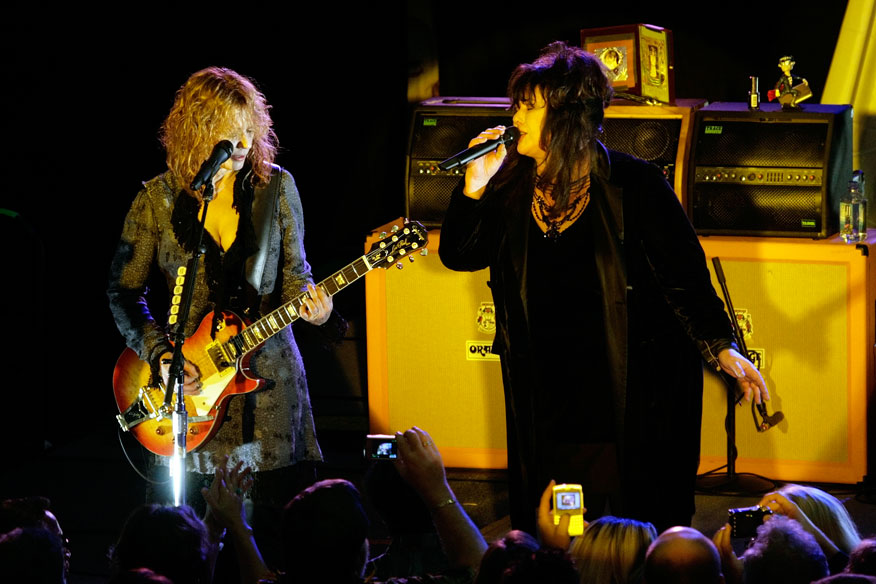

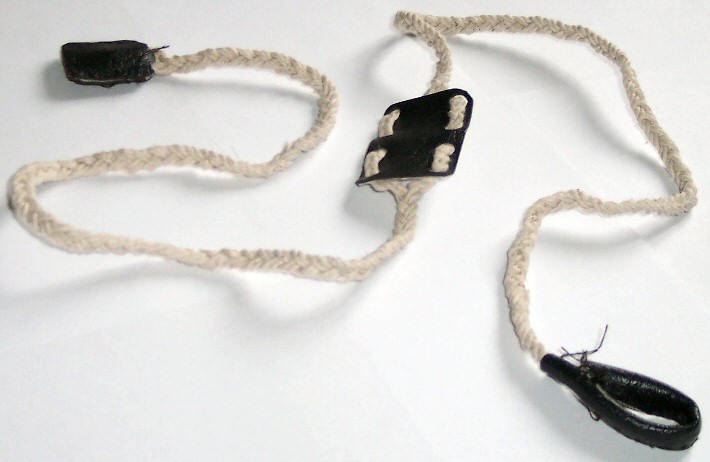
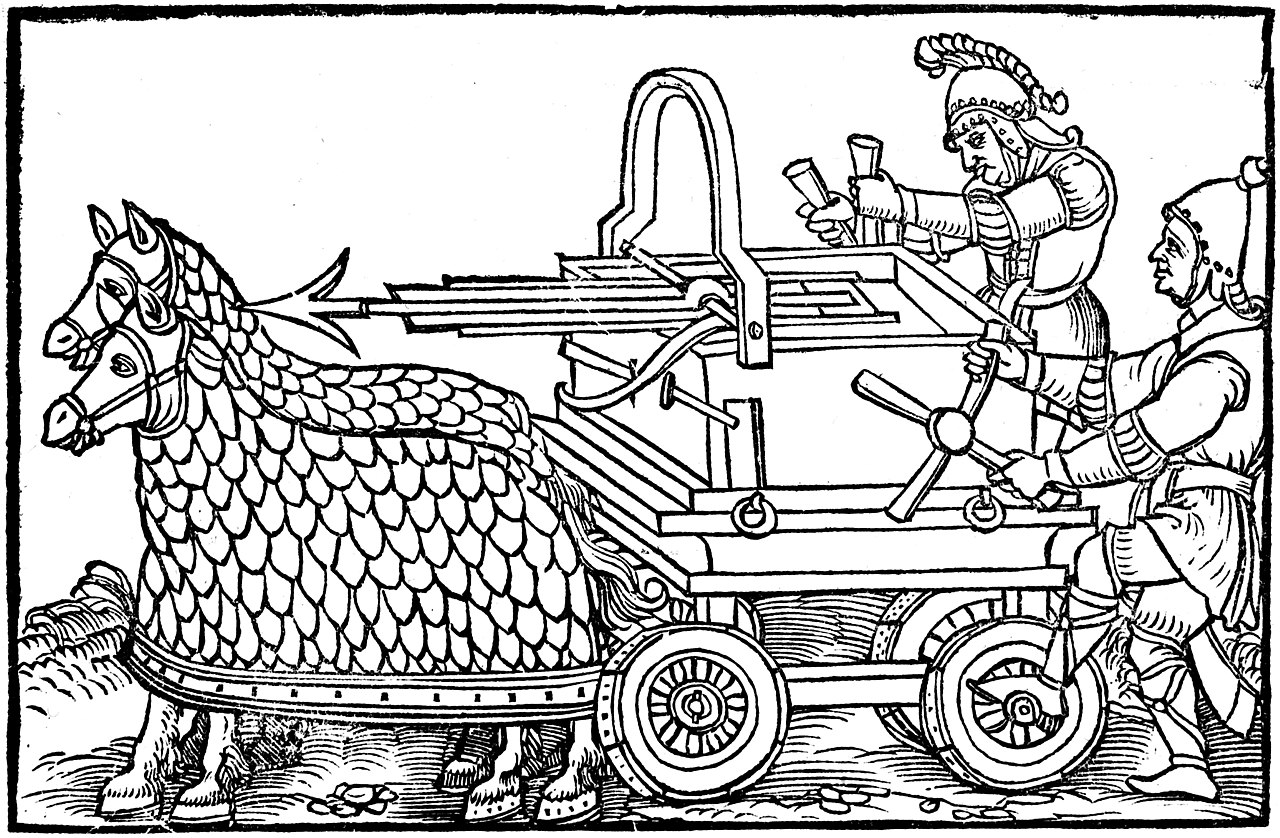













_MET_DP-834-001.jpg/1024px-Saber_with_Scabbard_and_Belt_Hook_(%E6%B8%85_%E8%85%B0%E5%88%80)_MET_DP-834-001.jpg)






2.jpg/1280px-Scottish_claymore_replica_(Albion_Chieftain)2.jpg)


_von_Anhalt.jpg/800px-Codex_Manesse_(Herzog)_von_Anhalt.jpg)

